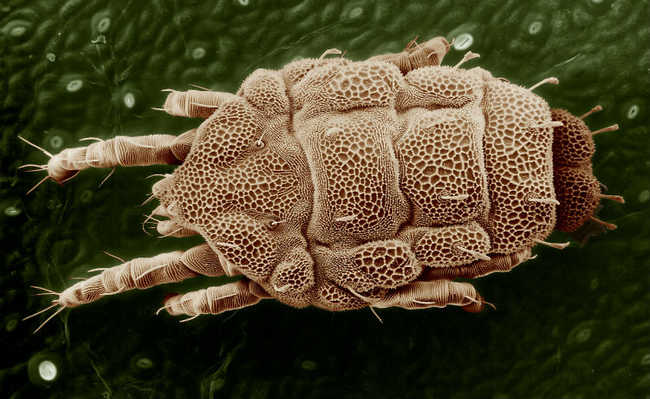Mites: what they are and how to avoid allergies
Understand what mites are, how they cause allergies and learn how to kill these little arachnids

Surely you've heard of them... But do you know what mites are and what kind of relationship they have with humans?
Mite is the name commonly given to animals of a subclass (Acari) of the arachnid class, the arthropod phylum. In the group, there are about 55,000 described species and they occupy a greater variety of habitats than any other group of arthropods.
Mites are the main creators of allergy-causing substances, the allergens, in a home or office. Hundreds of thousands of them can live in bedding, mattresses, upholstered furniture, rugs, curtains, air conditioners and so on. They feed on organic material, ie dead human skin cells found in dust, and thrive in optimal conditions in very humid environments.
Demodex
There are two species of mites that inhabit the human face: the Demodex folliculorum it's the demodex brevis.
O D. brevis is home to the sebaceous glands of our skin, while the D. folliculorum it lives in pores and hair follicles - the face is presumed to be the mites' favorite home because it has larger pores and plenty of sebaceous glands. In a 2014 survey, American biologist Megan Thoemmes, from the University of North Carolina, found that all volunteers had mites on their faces... Which makes the hypothesis that this happens to all humans very likely. According to Thoemmes, there is a ratio of two D. folliculorum for each eyelash.
However, the presence of these species of mites does not cause problems to human health. Although scientists cannot say with certainty, they believe that there is a relationship of commensalism (when the guest takes advantage of the host without causing harm or even providing benefits) between the Demodex and the human race - they probably consume harmful bacteria and clean the dead skin on our faces.
Thoemmes' team also believes that further research into mites could elucidate questions about human evolution, with the potential to reveal how our ancestors moved across the planet, as well as showing which modern populations are most closely related.
Allergy to mites
According to the allergist physician Celso Henrique de Oliveira, in an interview with the UOL portal, the feces of the mites are mainly responsible for allergic reactions. According to Oliveira, they have digestive enzymes that attack the individual's mucosa when inhaled. Dust mites trigger respiratory allergies and aggravate the situation of those suffering from asthma, allergies, bronchitis, itching and rhinitis. Dust mite allergy can range from mild to severe. A mild case can lead to a runny nose, watery eyes and sneezing. In severe cases, there are persistent sneezing, coughing, facial pressure or severe asthma attack.
How to kill mites?
Even if you managed to kill the mites, they would quickly return, as they are everywhere: at home, at work, on our colleagues and in the pores of the human face. However, decreasing its incidence is possible. Check out some tips on how to deal with mites:
- Ideally, pillows should be dry-cleaned, as during drying in a normal wash, the pillow heats up and becomes an ideal environment for the mites to reproduce. The use of vacuum cleaners on carpets, rugs, curtains and periodic washing prevents the accumulation of organic matter;
- Another big enemy for mites is sunlight as it reduces moisture. Expose objects that might be ideal environments for mites to sunlight during the day;
- Invest in an anti-mite cover for your pillows, blankets and mattresses;
- Remove dust and, if you have it, use the vacuum cleaner on beds and sofas. Make sure it has a HEPA filter;
- The pillows and mattresses must also be sanitized every week with the vacuum;
- Changing the air conditioning filters when they are dirty is very important. Sheets, protective covers, pillowcases, stuffed animals and comforters should be washed regularly.
To better understand and more interactively how to reduce the number of mites around you, watch the video "How to control mites and prevent respiratory allergies", from Canal Lar Natural.










